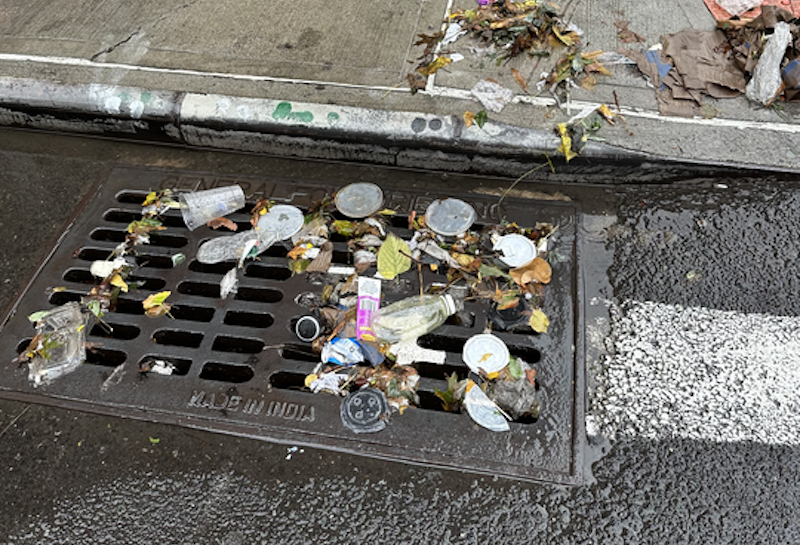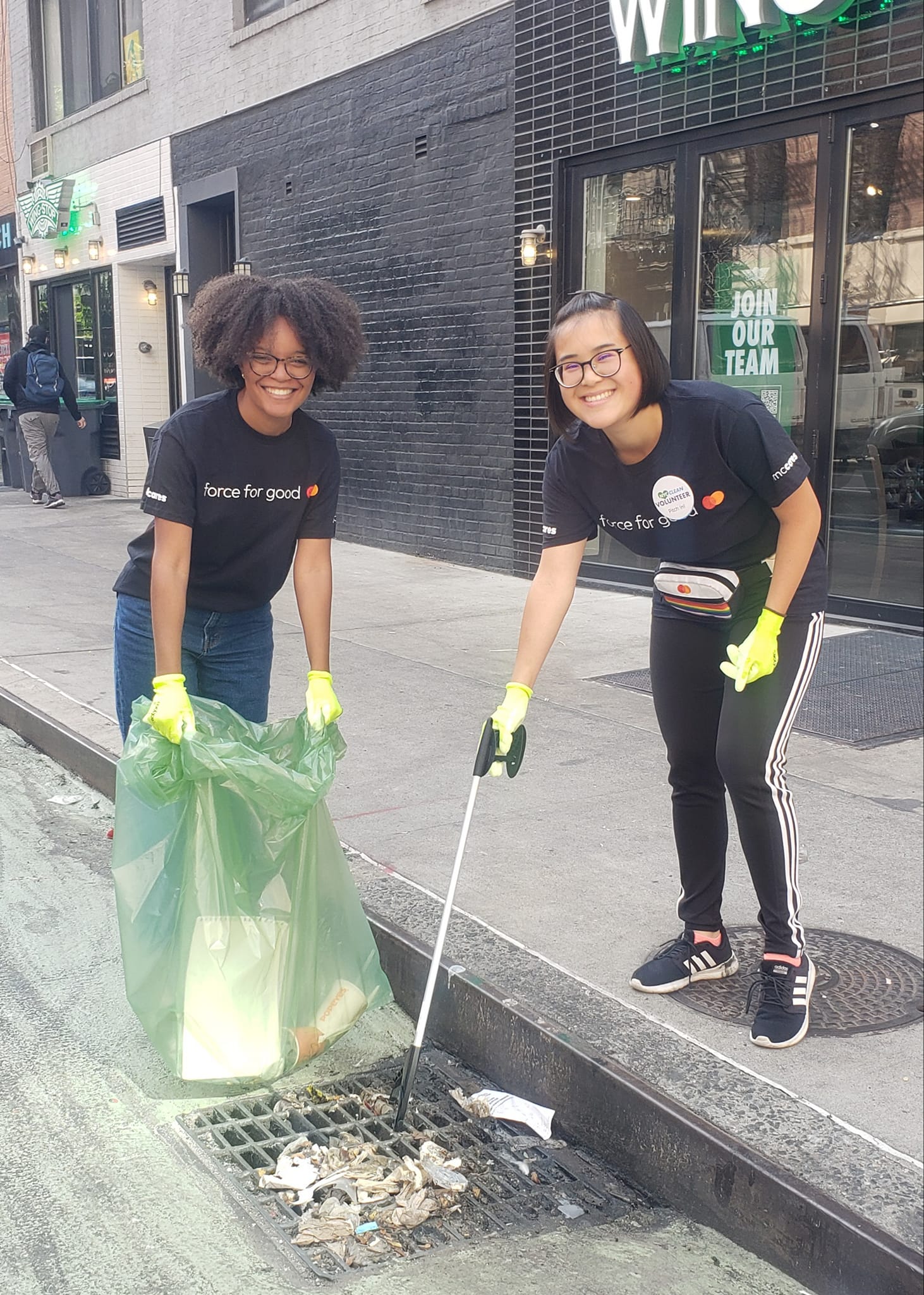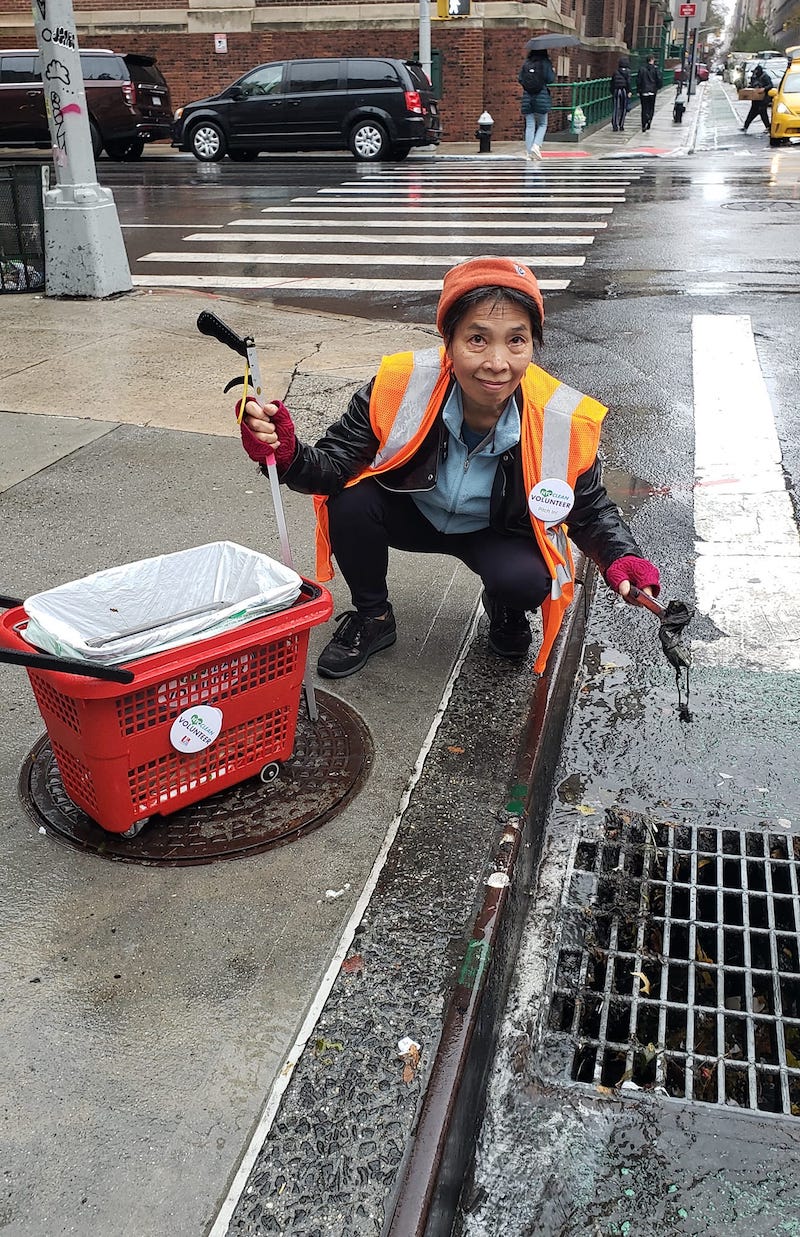How to clear out your storm drain before the next devastating flood
Last week's flooding was bad, and clogged storm drains across the city made it worse

By Tim Donnelly
Mayor Eric Adams made a call for New Yorkers to pitch in and prepare the city for the historic rains and flooding that walloped the city last week — about 24 hours too late.
In a midday press conference on Friday, as rain had already fallen for hours and many streets were filling up with poo water, Adams asked New Yorkers to go outside and help clear some storm drains. The drains are meant to catch rainwater, and many of them are regularly blocked by garbage, leaving water even fewer places to go besides your basement. Floods often pick up more of the loose trash on the streets too, further blocking the drains.
This request for help, when New Yorkers were also being told not to leave their homes at all, was one of the many reasons Adams was criticized for his confusing, lackadaisical and out-of-touch response to the storm whose effects seemed easily predictable to anyone capable of even modest object permanence.
The five boroughs have about 135,000 catch basins, also known as storm drains, which is too many for any agency to inspect every time it rains. Asking New Yorkers to help get debris out of them is a fair way to mobilize an army to help fight the floods. It just needs to happen before a storm — or, ideally, much more often — to do any good.
“Storm drains are always always always our No. 1 priority,” said Soleil Sabalja, founder of Nasty New Yorkers, a directory for neighborhood cleanup events. “I can speak for almost all cleanup groups: we all, when we get started, say, ‘Please make sure to keep the storm drains clean because that’s one of the reasons that causes the flooding.’ ”
Even if every storm drain worked perfectly, it wouldn’t be enough to totally stop the kinds of historic floods we’ve been having seemingly every year or so now. We need a lot less pavement and a lot more soft surfaces that can absorb water, to start with, and to deal with a lot bigger problems too. As City Councilman Justin Brannan tweeted last week: “Guys, it's not the catch basins. It's climate change.”
But clearing a drain so it can do its literal job can certainly help. Despite the mayor’s request, the city has no official guides on how to efficiently — and safely — clear storm basins yourself. So we talked to some experts for the lowdown on how to do it yourself.

Get the right equipment
Sokie Lee, founder of NYC Clean Volunteers, and other street cleaners use “reacher” claws to pick up garbage. The devices are sold at plenty of drug stores; you can also borrow one from your neighborhood bodega, which will often have one on hand to reach the high shelves, or borrow one from a neighborhood cleanup group.
But debris in drains can get really stuck, and the grabbers aren’t strong enough. Lee instead needs some heavier hardware: a pair of strong metal tongs, like the ones used for the grill.
“It’s really important to go into the grate and just pick up the garbage and the gunk,” she said. “When it floods, that's when it builds up, it’s really gross and disgusting.”
If you’re trying to clear standing water from around a clogged drain, do your best not to get the water — which, worth repeating, can be poo water, even when the sewers aren't backed up — on your skin. Heavy rain boots and gloves are a must.
“You don’t know what it is that you’re touching, especially the storm drains,” Sabalja said. “Everything from dog pee and poop is kind of flowing down in that area.”
Analyzing the clog
On Friday, Sabalja surveyed storm drains in her Lower East Side neighborhood. She noted the debris that was causing stormwater to run down the street instead of into the sewer: leaves, garbage, plastic bottles, to-go coffee cups and the infernal plastic bags that do nothing but cause troubles (and were supposed to be banned, partially for this exact reason).
A lot of that is not the scourge of the much-maligned litterbug; but from even the most well-intentioned trash tosser. The city’s garbage cans are open, often-overflowing (as we reported on in August), and occasionally turned over; curbside garbage bags rip easily, their contents swept into the street the next morning. Car drivers who don’t move their vehicles from free street parking prevent street sweepers from catching the junk before it hits the basin. The amount of garbage, not just litter, is the problem. A gust of wind can turn one overflowing trash can into a debris fountain that can clog drains, and worse.
“It’s really terrible to see,” Sabalja said. “Whatever goes in there is going to go straight to the rivers.”
Lee always sees one culprit in particular: Big Gulp cups from 7-Eleven.
“For some reason they get littered a lot more than anything else,” she said. “I don’t know why.”
Mostly, drain clogs look like stuff that has blown off of overfly full trash cans.
“People are truly not litterers, they pile on top of garbage cans that are full,” Lee said. “Of course they’re gonna fall off.”

TikTok tips
Unclogging drains is one of those oddly satisfying activities that has gained a huge following on TikTok, almost as popular as the people who just constantly break beer bottles in their backyards. Tune into to this brain drain storm of activity to see how the professionals do it: some are out there using rakes and shovels, but some can do it with just a handmade whirlpool.
Join a neighborhood cleanup group
Dozens of citizen clean-up groups have sprung up around the city in recent years, many of them borne out of disgust at the state of litter and trash in our streets during the pandemic. The groups meet regularly to target specific blocks or streets, excavating bags and bags of debris from sidewalks, gutters, drains and streets. One organizer estimated between five and 20 are happening on any given weekend across the city; you can find many of them through Nasty New Yorkers.
Some of them will actually go out and target drains when flood waters are rising. But joining one is more about a mindset shift: it’s a shortcut to seeing trash on our streets in a different light, one that often leads to behavior changes, Sabalja said.
“We know community clean ups are great but they’re really just the Band-Aid,” Sabalja said. “They are absolutely no solution whatsoever to the climate crisis and a lot of problems that are going on across the world with the environment.”
Instead, cleanup groups are a “gateway.”
“Once you see and start realizing, ‘Oh my god, there’s so much garbage everywhere,’ [people] start changing their behaviors, they start talking to their friends about it. It’s a great way to get people into environmental activism.”




Comments ()